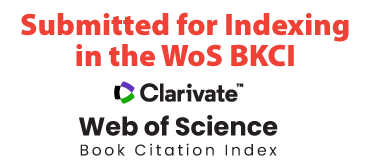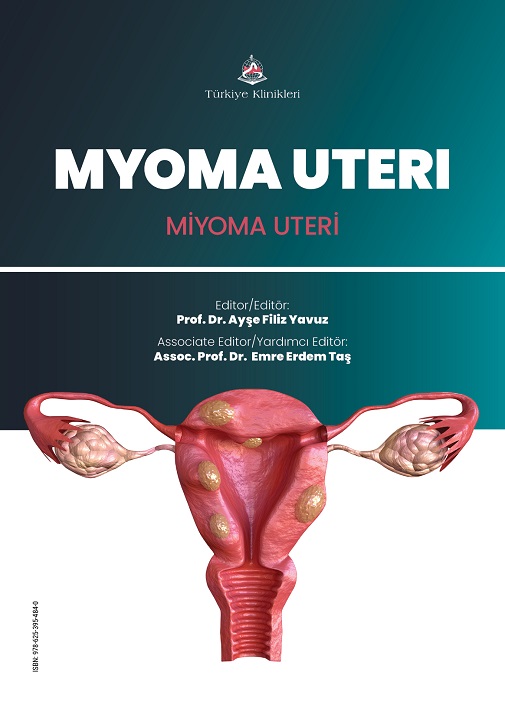| Editör/Editörler | Prof. Dr. Ayşe Filiz Yavuz |
|---|---|
| Editör Yardımcısı/Yardımcıları | Assoc. Prof. Dr. Emre Erdem Taş |
| ISBN Numarası | 978-625-395-484-0 |
| BISAC Codes | MED033000 |
| Kitap Dili | İngilizce |
| Sayfa Sayısı | 221 |
| Basım Yılı | 2025 |

Uterine fibroids are one of the most common benign tumors in gynecology. It is the second most common cause of gynecological surgery after cesarean section. Although it is a benign tu- mor, it can lead to clinically severe consequences. Deep anemia, severe bleeding, compression complaints, infertility, and morbidity problems during pregnancy are the most common conse- quences for both women and physicians. At the same time, the financial consequences and loss of the labor force are also serious.
In order to fully understand fibroids and their treatment with many different methods, this book, which is evaluated in every aspect, has been prepared in a way that includes all relevant top- ics sought by physicians. Every topic related to fibroids, including etiology, genetics, frequency, clinic, complications, treatment, and follow-up processes, and their relationship with pregnancy, was examined in detail under different headings.
As our knowledge of medicine, technology, genetics, and epigenetics increases, our knowl- edge of fibroids and their treatment, prediction, and prevention may change in the future, and it may be possible to gain and apply different perspectives. The aim of this book is both to define and understand fibroids as a whole and to convey the latest information in light of innovations and current data.
We would like to thank all our colleagues for their efforts in bringing this book to life by scan- ning the sources in light of current information.
We hope that this book will be useful to all physicians and patients with the information ob- tained.
Prof. Dr. Ayşe Filiz Yavuz
Ankara Yıldırım Beyazıt Univercity, Faculty of Medicine, Department of Gynecology and Obstetric,
Ankara, Türkiye
Assoc. Prof. Dr. Emre Erdem Taş
Ankara Yıldırım Beyazıt University, Faculty of Medicine, Department of Gynecology and Obstetric,
Ankara, Türkiye
Bölümler
Uterus Anatomy
Selma Çalışkan
Etiology of Leiomyomas
İnci Halilzade
Epidemiology of Leiomyomas
Mohammad İbrahim Halilzade
Myoma Uteri and Genetic Factors: A Clinical Genetic Perspective, Genetic and Molecular Mechanisms
Serdar Ceylaner, Gülay Ceylaner
Pathological Classification of Leiomyoma and Types of Degeneration
Kübra Katipoğlu, Fazlı Erdoğan
FIGO Classification of Myomas
Elçin İşlek Seçen
Symptomatology of Uterine Myomas
Ülkü Mete Ural
Diagnosis and Imaging of Myomas
Erdem Özkan
Medical Treatment of Uterine Leiomyomas
Hande Balaban, Esra Aktepe Keskin
Myomectomy
Fatma Betül Avşar
Abdominal Hysterectomy: Total/Subtotal Selection and Reasons
Ömer İlker Göçmen, Ahmet Göçmen
Myomectomy of the Uterus Via Vaginal Route, Treatment of Vaginal and Cervical Myomas
Gonca Türker Ergün
Laparoscopic Myomectomy
Emre Erdem Taş
Hysterescopic Myomectomy
Batuhan Turgay
Myomectomy with Robotic Surgery
Ali Akdemir, Sabahattin Anıl Arı
Uterine Artery Embolization
Ahmet Burak Kara, Ömer Faruk Ateş
Complications and Management of Operative Methods
Gamze Yılmaz
Relationship Between Myoma and Malignancy: Approach in Case of Incidental Sarcoma and Stumps
Osman Türkmen
Coexistence of Myomas and Other Pathologies
Büşra Lekesiz, Hüseyin Levent Keskin
Myoma and Infertility
Sabri Çolak, İlknur Merve Ayazoğlu
Myomas and Pregnancy
Filiz F. Bilgin Yanık
Aproach to Myoma in the Postmenopausal Period
Serpil Aydoğmuş
Use of Traditional and Complementary Medicine for Uterine Leiomyomas
Raziye Toksöz
Leiomyoma and Recurrence
Hüseyin Aydoğmuş
Myoma Uteri and Urinary Incontinence
Gülcan Kocaoğlu, Gülin Feykan Yeğin
Operative Energy Instruments and Their Uses, Advantages and Disadvantages
Aslıhan Coşkun, Hüseyin Levent Keskin
Management Selection Based on Case Examples
Ayşe Filiz Yavuz


